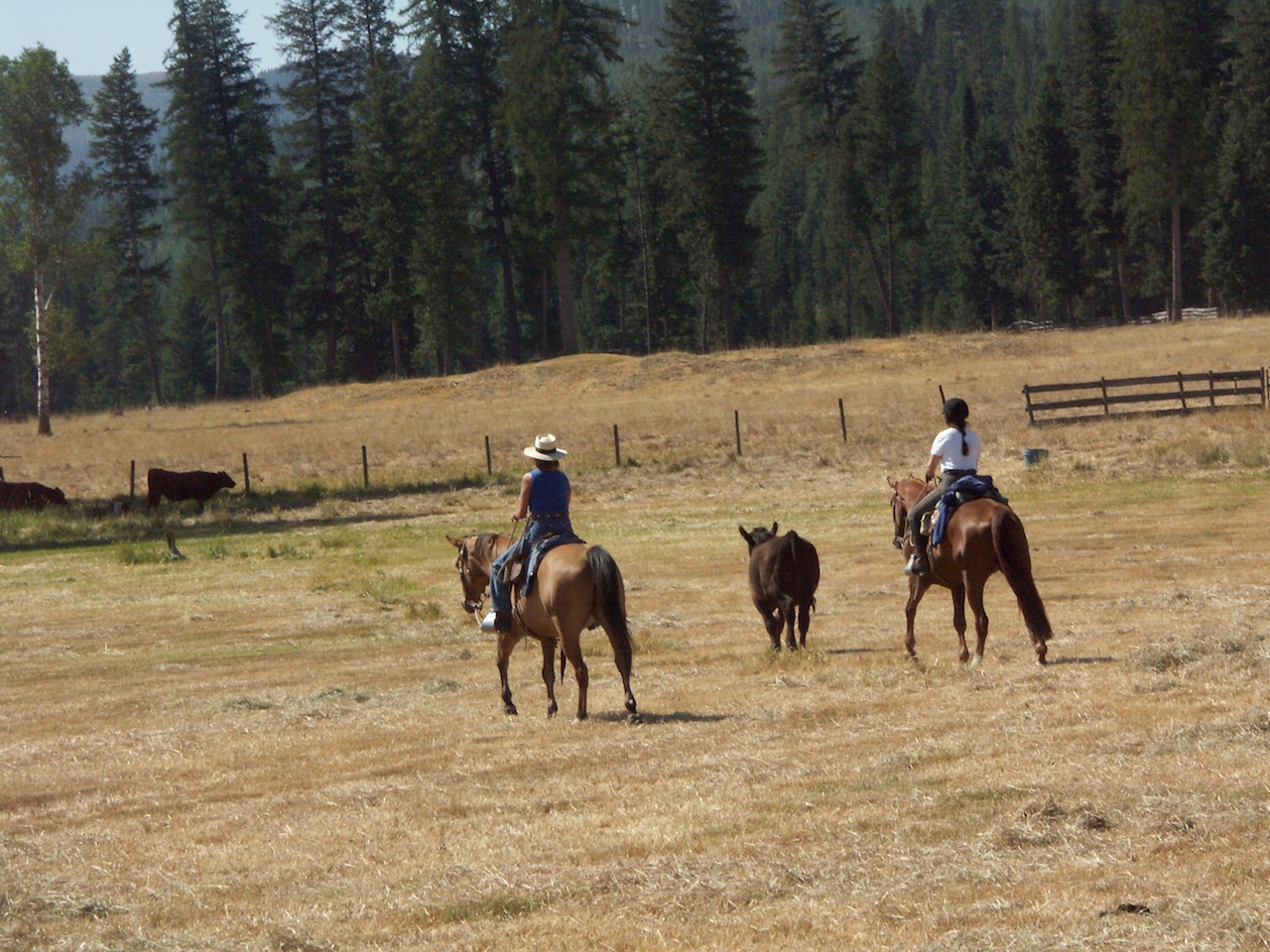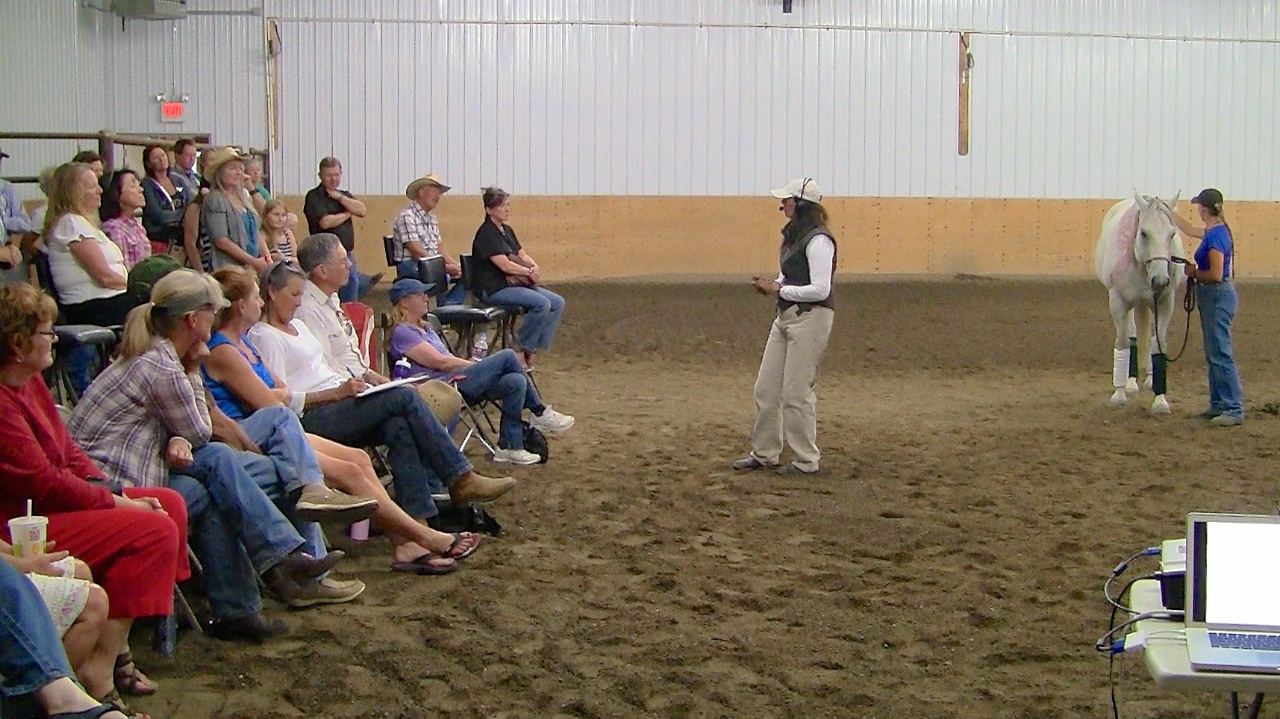Equine Biomechanics
Biomechanics – the study of how anatomy creates movement
An understanding of equine biomechanics helps riders develop healthy and responsive equine partners.
WHY does a rider need to understand equine biomechanics?
It is important to understand how a horse moves because all equestrian disciplines revolve around movement, including:
- Cutting horse separating a cow from a herd
- Jumping horse taking a 5’ fence
- Race horse galloping down a track
- Draft horse pulling a heavy load
- Endurance and trail riding
Through the study of biomechanics the rider learns and understands WHY certain training methods are more productive and HOW this knowledge helps ensure their horse’s healthy and efficient movement. To perform to its highest level of potential, the horse needs to be encouraged into a ‘healthy frame’ or ‘position’ that allows it to develop the necessary muscles for productive and efficient movement. For an equine athlete to remain healthy, the horse needs to have its body (and mind) built up over a significant period of time. When these movement muscles are developed, the equine athlete will be able to enjoy a great riding partnership for many years.
WHY is it important to understand how a horse moves?
Healthy and efficient movement in the horse leads to greater performance and longevity. To maintain soundness and improve a horse’s movement, it is essential to know how horses naturally move and how their movement systems function.
Training time can be enhanced and more productive if one understands which muscles the horse needs to develop for a specific discipline and how the horse needs to move to create that development. This leads to importance of understanding biomechanics.
Knowledge of the components that make up the musculoskeletal system provides clearer understanding of equine movement to maximize training. Klaus Balkenhol, a USA Olympic Dressage coach, states in The Rider Forms the Horse that:
“What is absolutely essential for the training of the horse is an understanding of the links between muscular function and the skeleton working in combination during the different phases of training and exercises. This applies to whichever type of equine activity has been chosen.”
Biomechanical understanding of how a horse moves can be applied to all equine disciplines and exercises.
HOW do riders affect their horse’s movement and WHY does it matter?

This horse’s back has dropped. This could be due to age, conformation, or if the horse was ridden in an “upside down frame”.
It is well documented that efficient and healthy movement is imperative to keeping our equine athletes sound. It is very unfortunate that horses become lame. There are many factors that contribute to lameness that inhibit a horse’s movement:
- Hereditary problems
- Poor conformation
- Physical trauma
- Improper shoeing
- Poor saddle fitting
- Rider induced lameness
- Overuse in a demanding discipline
- Horses posture during training
The goal is for the ridden horse to maintain the body position and balance it has when it is without the rider and to learn to move freely and easily under the rider’s weight. Mental and physical relaxation in the equine athlete is required to maintain their natural unrestrained movement. Relaxed horses are able to move freely and efficiently. To maintain relaxation, the rider and horse must find a place of balance. When the horse is relaxed and in balance, then his motion can move without hindrance.
Rider Induced Lameness
The way a horse is ridden can lead to chronic unsoundness. Without healthy conditioning, lameness can develop when a horse’s body is repeatedly misdirected: either by constricting the horse’s joints and/or compressing the ligaments, or by compromising the muscles. To prevent lameness and understand a horse’s movement, it is essential to know how and the horses’ musculoskeletal systems function.
This leads many riders to be concerned how their riding styles affect their horses.
HOW can I improve my riding to insure that my horse remains physically and mentally sound?
Riders have good intentions; none intend to cause lameness in their horse. Rider induced lameness is usually caused by a rider’s lack of exposure or awareness of the horse’s anatomy.
To perform to its highest level of potential, the horse needs to be encouraged into a ‘healthy frame’ or ‘position’ that allows it to develop the necessary muscles for balance and throughness. Through an understanding of classical training, the rider enables the horse to develop this healthy musculature and to move forward with relaxation and relaxed and greater freedom of movement.
HOW does Karen incorporate biomechanics into her Refined Performance Horsemanship Program?
Karen incorporates biomechanical principles into her program, clinics, and lessons with lectures, groundwork exercises, and under saddle exercises. She addresses the horse’s posture and how different training methods can help enhance a horse’s physical and mental well-being.
Classical principles which are in alignment with the horse’s natural movement are followed. The training points address:
- horse behavior and how horses respond to tension and how this affects their posture
- importance of relaxation for all disciplines
- benefit of a healthy posture to encourage a swinging back, throughness, and balance in the horse
- riding a horse from “back to front”
- importance of soft hand contact
Read more about Classical Principles…
After her clinics and lessons, participants leave with new skills and exercises that they can implement in their own training and riding programs.
PowerPoint Lectures and Painted Horse Demonstrations
Karen gives Equine Biomechanics PowerPoint lectures and painted horse demonstrations. The material is centered on the work of the German equine biomechanics expert, Dr. Gerd Heuschmann. Dr. Heuschmann is the author of the bestselling book Tug of War, the DVD If Horses Could Speak, and his new book Balancing Act. Also included are the works of Dr. Hilary Clayton’s and Dr. Deb Bennett.
A detailed description of Karen’s RPH Equine Biomechanics Lectures and Demonstrations can be found is this printable RPH Equine Biomechanics Lecture and Demonstration Handout.

